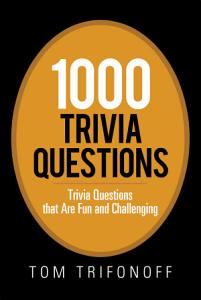Trivia Scores Points in Blogging for Business

With all this staying at home dictated by the COVID-19 situation, I’m particularly grateful for the TV game show Master Minds. Of course, at Say It For You, I’ve long touted the advantages of using trivia in blogging for business. Trivia can help spark curiosity and interest in readers, at the same time helping business owners and professionals explain what they do and how they believe it should best be done.
I know I’m not alone in enjoying trivia. In fact, I have a theory about quizzes in general, which is that our curiosity is most intense when we’re testing our own knowledge. That’s why tests, games, and quizzes are hard to resist, including those incorporated into blog marketing.
I’m going to use some actual questions from the show to suggest different types of businesses or professional practices which might use those questions as a jumping-off point for their blog post message, but challenge you to find your own connections (you’re invited to share your best ideas in the comments)…
Housed in the Smithsonian, what color is the Hope Diamond?
A natural for a jeweler’s blog, this material might be used for a post about the importance of estate planning or to promote company that installs burglar alarms.
The inhabitants of which U.S. territory drive on the left side of the road? (Virgin Islands)
Just for starters, this piece of trivia could be used to promote driving lessons or auto sales.
When putting on your shoes, where are you most likely to see an aglet? (laces)
This one’s a natural for a shoe merchant or designer, but could be used for a sports equipment company as well.
If you pour a handful of salt into a glass of water, what happens to the water level? (stays the same)
This tidbit might be used to promote cookbooks or cooking equipment.
What national park contains the tallest peak in North America? (Denali in Alaska)
A car company or travel agency could definitely use that one for a blog Q&A.
Which poisonous plant was, in the Middle Ages, thought to utter a shriek when pulled from the ground? (mandrake)
This would be perfect for a garden shop blog, but could be used by a landscaper or grounds maintenance company.
For me, watching those episodes of Master Mind has reinforced the importance of trivia in blog content writing. Trivia allows readers to have the fun testing their own knowledge, while showcasing the expertise of the business owner or practitioner.
When it comes to using trivia to spice up blog content, as Ben Bailey (host of another of my favorite trivia quiz shows) might ask – “You in?”




Follow us online!